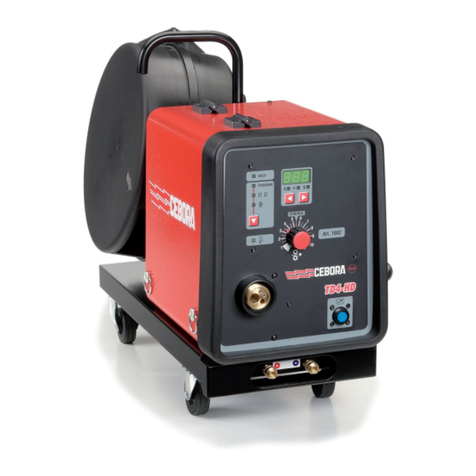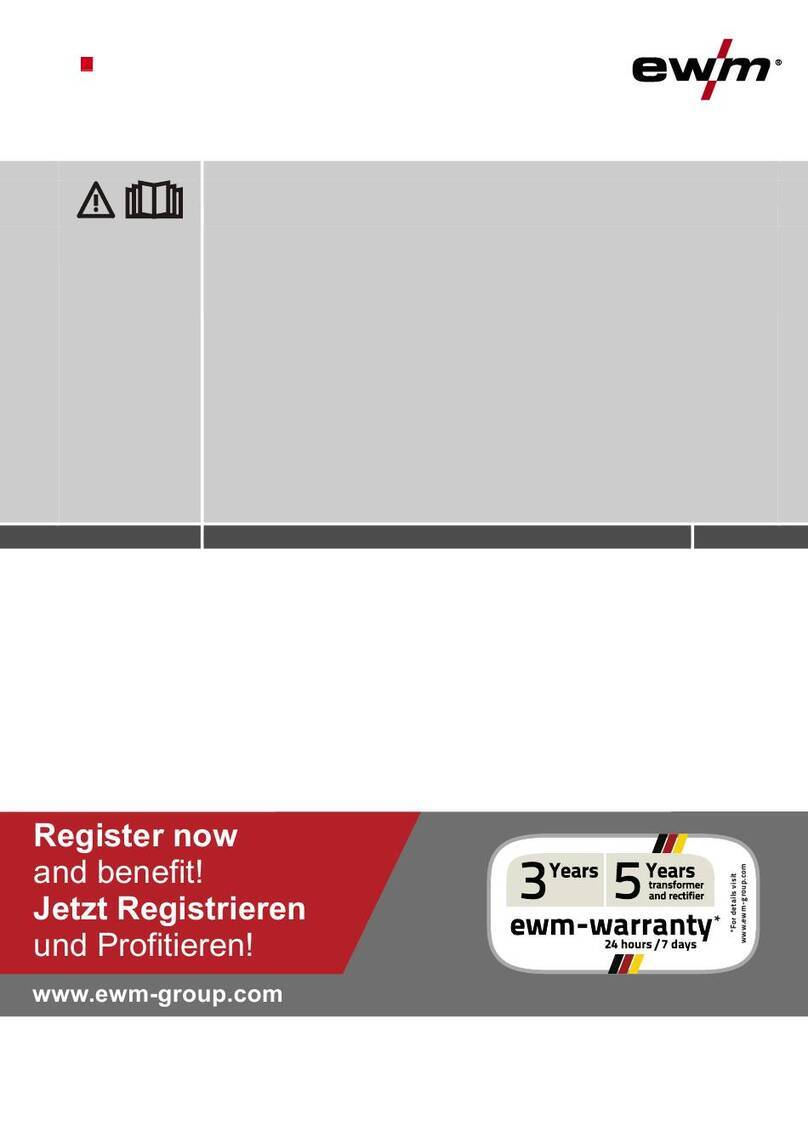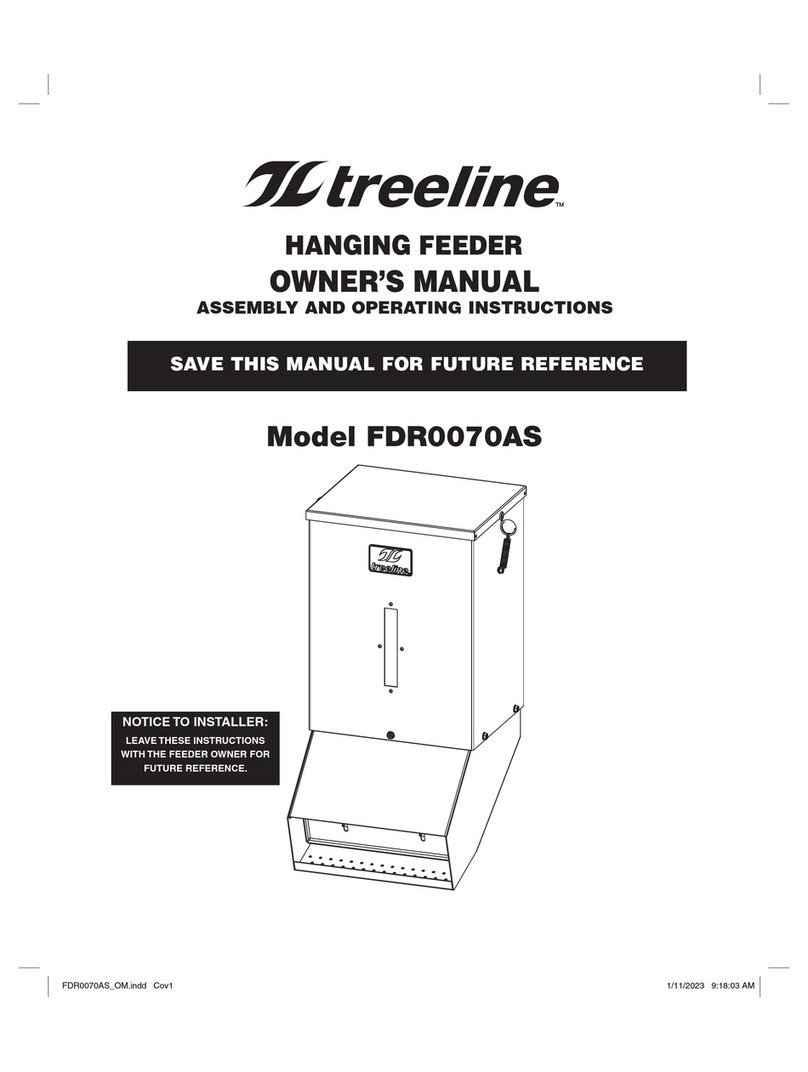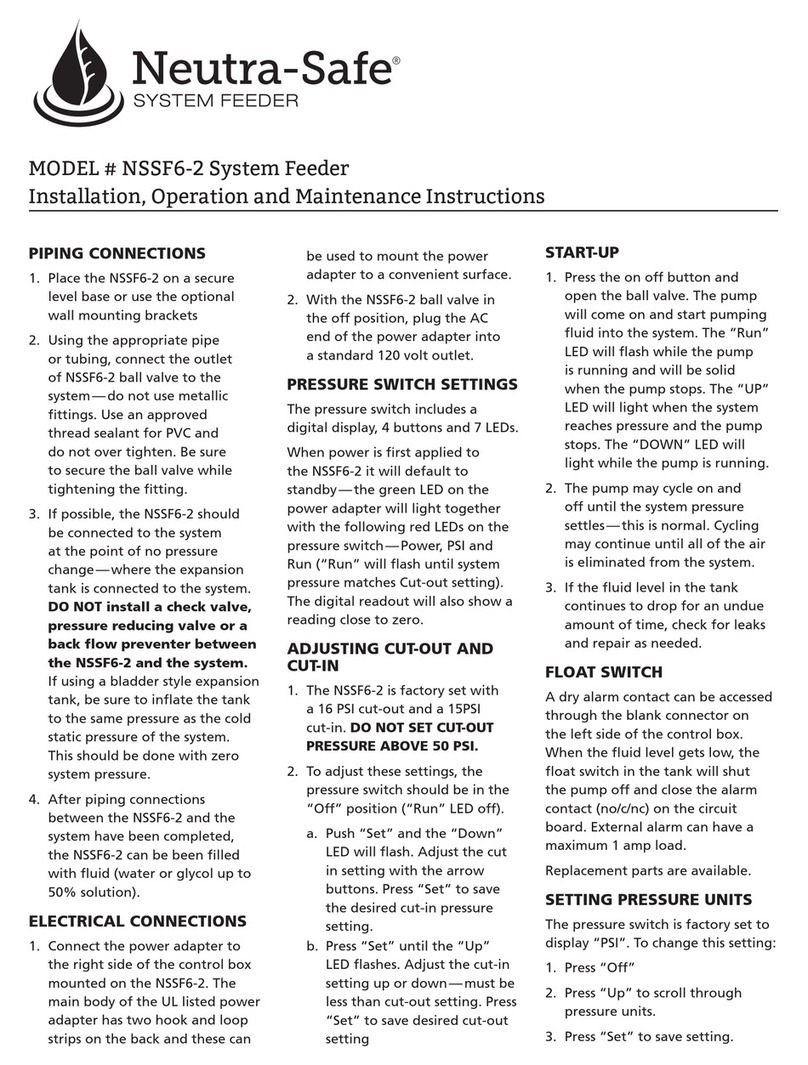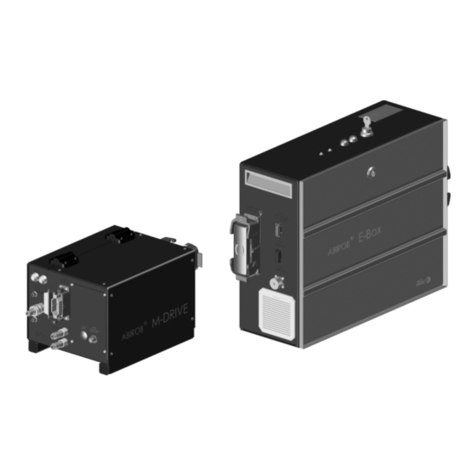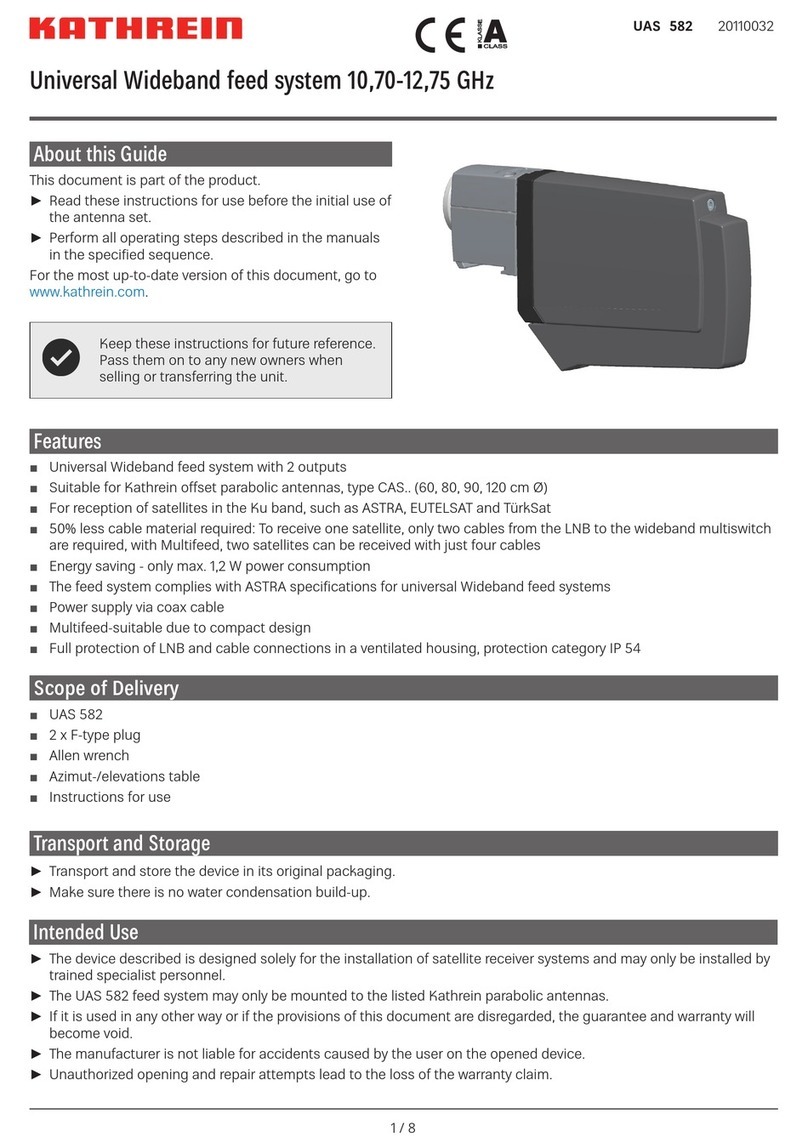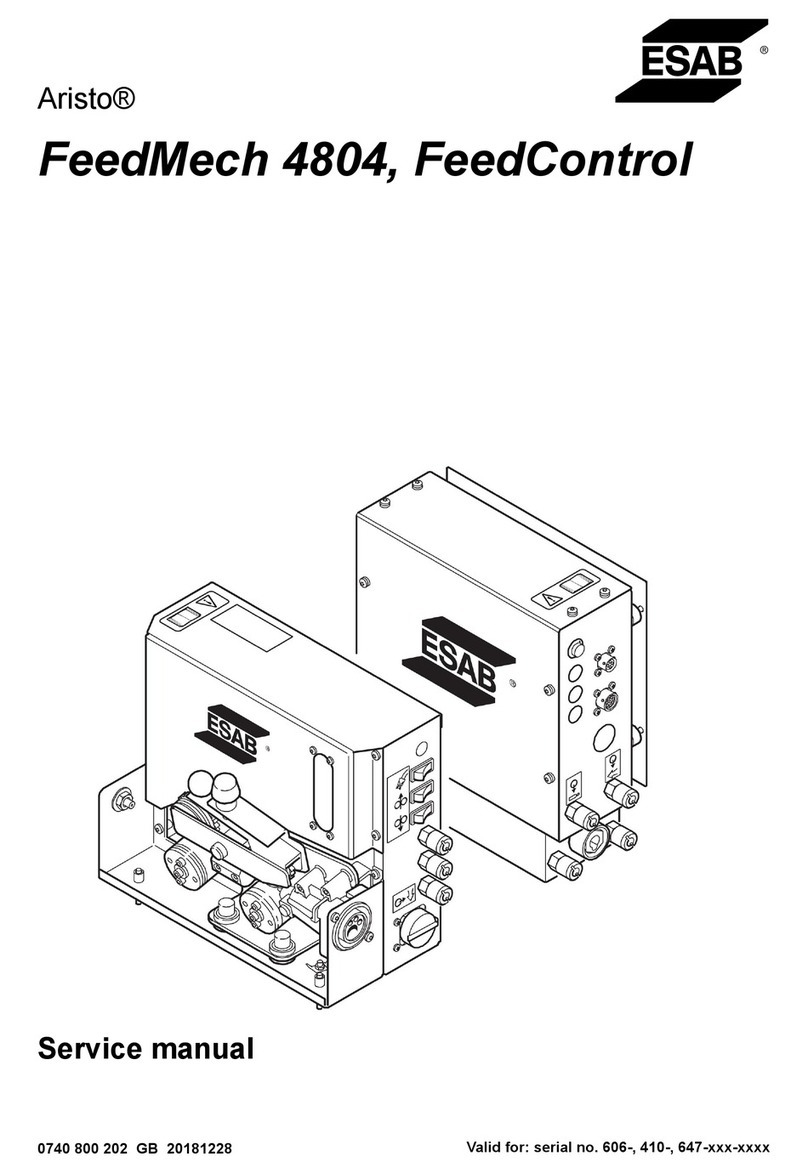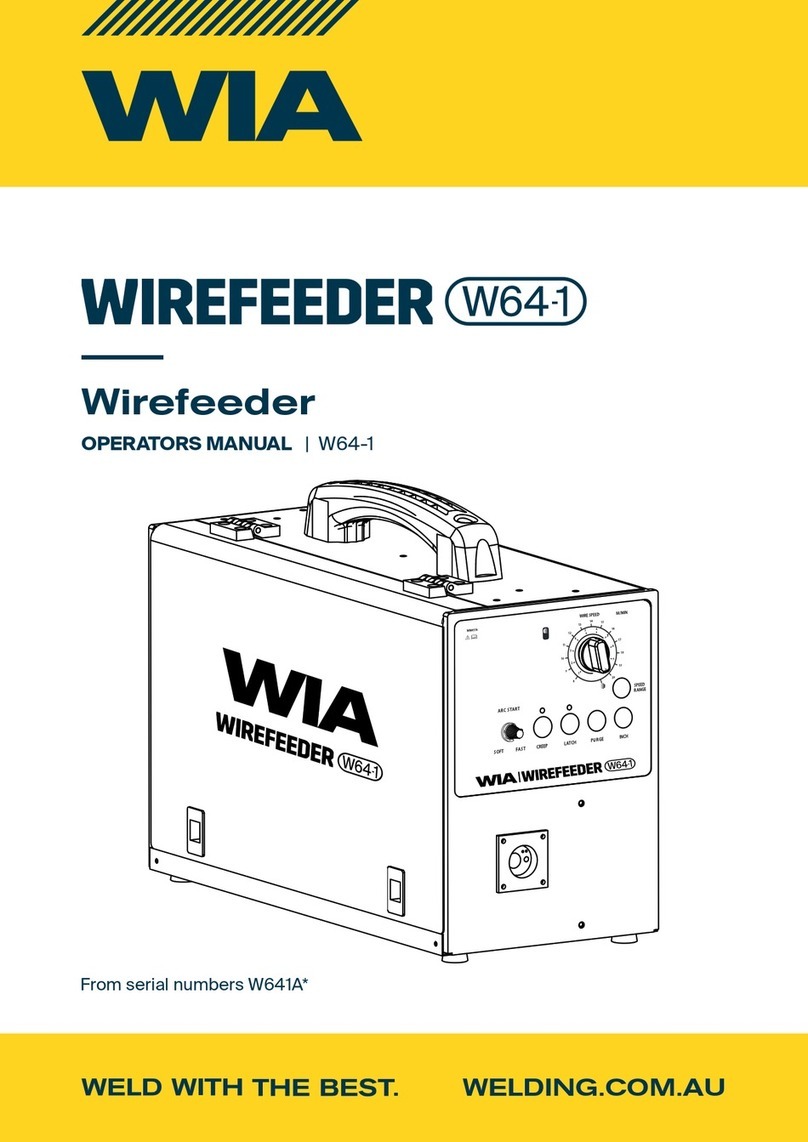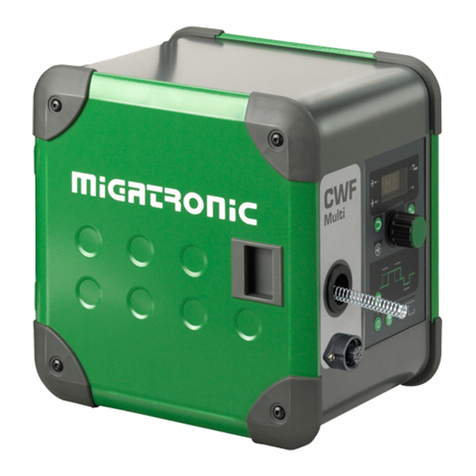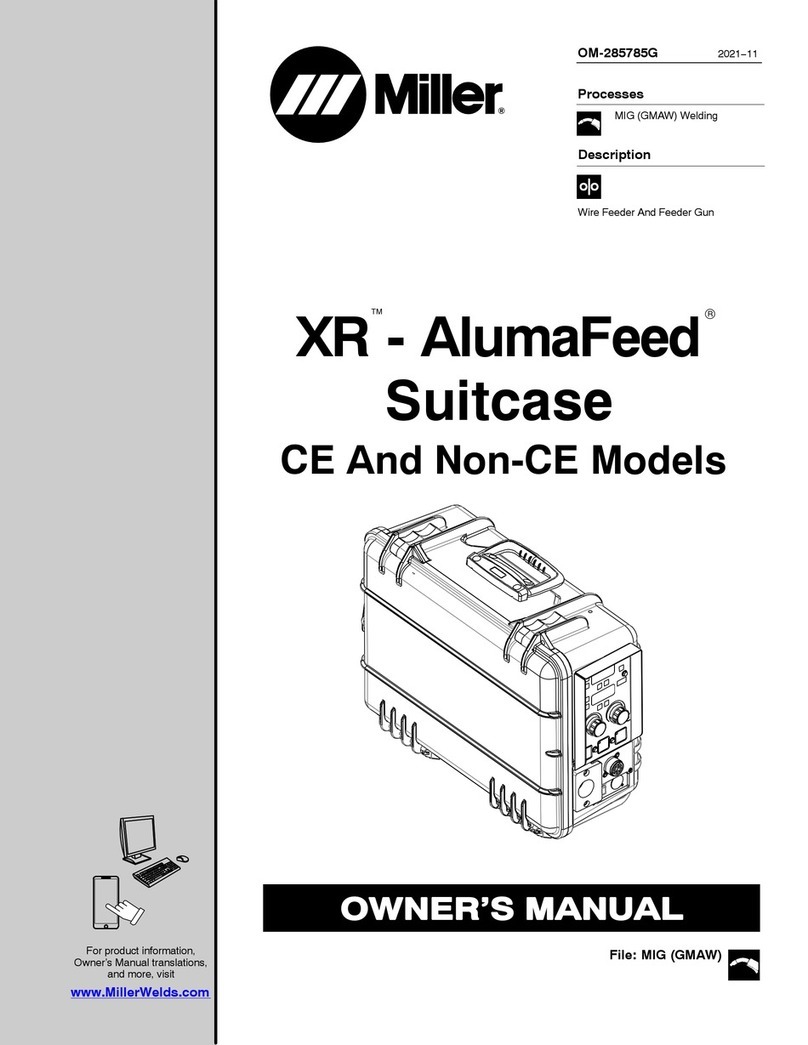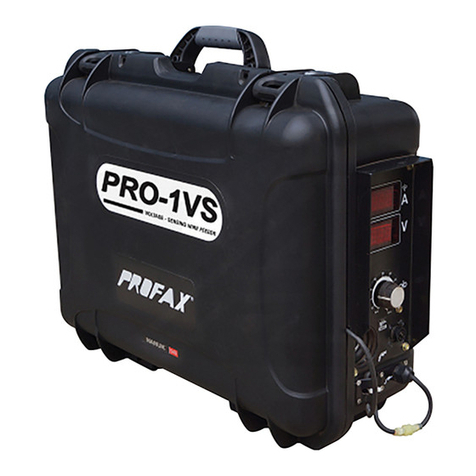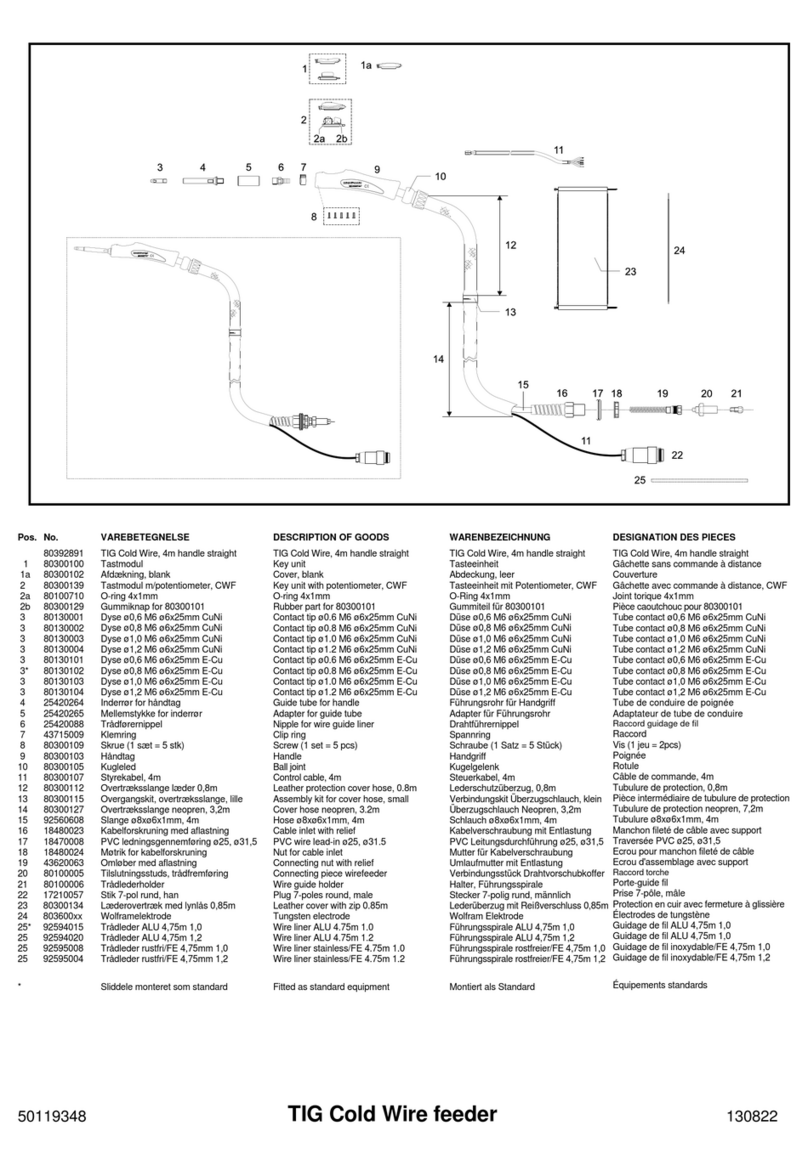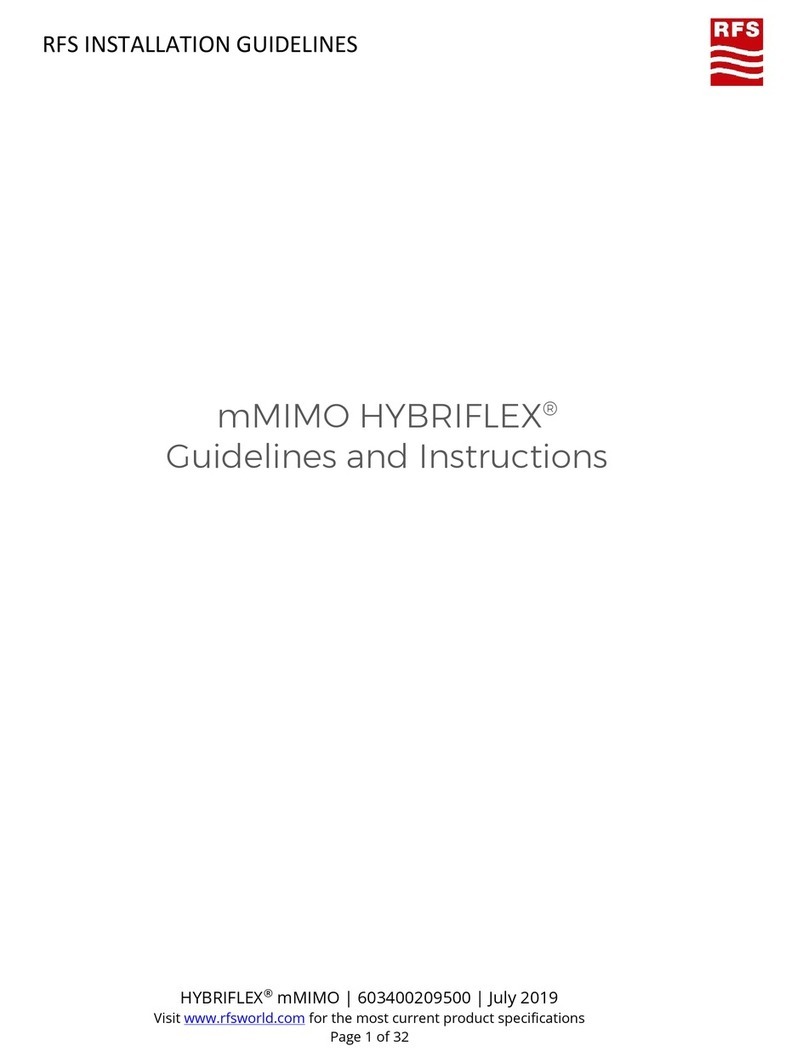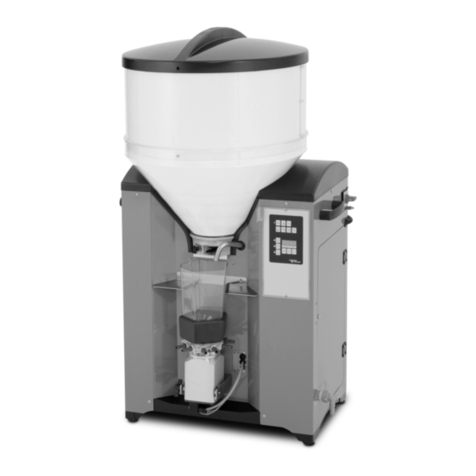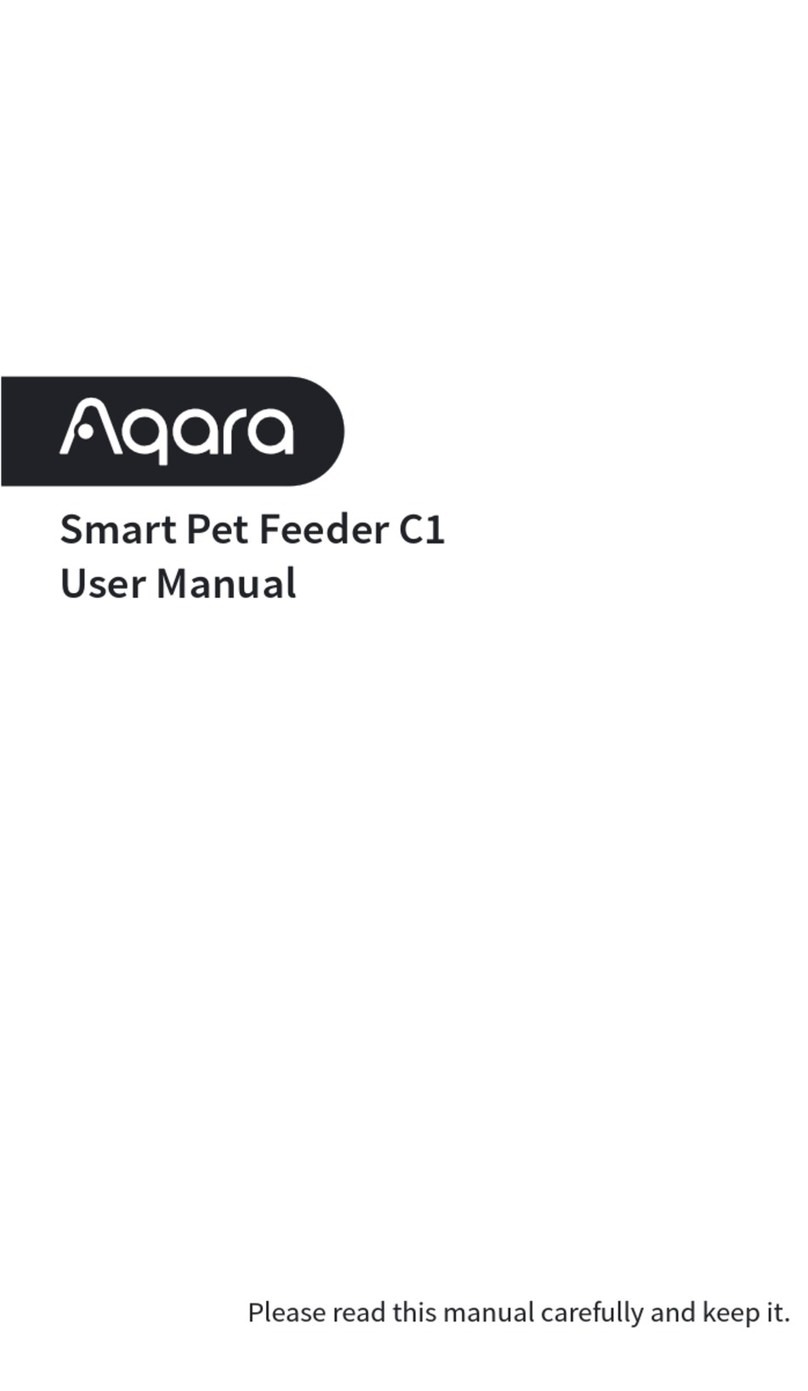
01.10
VAL.064.--.M.4L
2
-
-
-
-
MBW
4
OPERATIONANDMAINTENANCE
BETRIEBS-UND WARTUNGSANLEITUNG
UTILISATION ETENTRETIEN
USOEMANUTENZIONE
A) ADDRESS OF
LOCALDEALER OR LOCAL
SERVICEPOINT
A) INDIRIZZO RIVENDITORE O
PUNTO DI ASSISTENZA LOCA-
LE
A)ANSCHRIFTDESHÄNDLERS
ODERDESKUNDENDIENSTES A) ADRESSE DU REVENDEUR
OUDUSERVICEAPRES-VENTE
LOCAL
B) EQUIPMENT
IDENTIFICATION
Refer to order code in acknowledge-
ment of order, in invoice and on pack-
aging to identify equipment.
C)CONTRA-INDICATIONS
If the user observes normal pre-
caution (typical of this type of ma-
chine) together with the indications
of this manual, work is safe.
NOTE FOR FOOD GRADE MICRO-
FEEDERS:
Clean micro-batch feeder with wa-
ter from time to time. Cleaning fre-
quency depends on type of prod-
uct and plant.
In cleaning certain feeder parts
such as the body, the metering
screw, the outlet pipe and the pro-
tections, special care must be tak-
en.
Before using any other than water
for cleaning, contact a WAM sales
office.
If material is acid or temperature
is extremelyhigh or low also con-
tact a WAM sales office.
The equipment must not be put
into service before the machine or
plant it has been fitted to has been
declared in conformity with the reg-
ulations of the directive 14/06/1982
(89/392/ECC).
It is the plant designer’s / plant fit-
ter’s responsibility to design and
install all necessary protection in
order to avoid that breaking and/or
yielding of the quipment or of parts
of it might damage people and/or
parts of the plant (e.g. adequate
protection against falling down of
the motor etc.).
For dangerous materials, i.e. tho-
se that must not get in contact with
the human body or be inhaled, for
flammable, explosive and bacteri-
ologically dangerous materials the
plant manufacturer or fitter must
provide for the required safety de-
vices and measures.
B) IDENTIFIKATION
Zur korrekten ldentifìkation auf den
Bestellcode in der Auftragsbestäti-
gung, in der Rechnung und auf der
Verpackung Bezug nehmen.
C)KONTRA-INDIKATIONEN
Sofern der Betreiber die für Geräte
dieser Art typischen Vorsichtsmaß-
nahmen zusammen mit den in die-
ser Dokumentation enthaltenen Vor-
schriften beachtet, ist die Betriebs-
sicherheit gewährleistet.
BETRIFFT MIKRODOSIERER FÜR
NAHRUNGSMITTEL:
Dosierer regelmäßig mit Wasser
abwaschen (Häufigkeit abhän-gig
von Produkt und Anlagentyp). Be-
sonders bei der Reinigung von
Gehäuse, Dosierwerkzeug, Ablauf-
rohr und Schutzvorrichtungen mit
Vorsicht vorgehen. Bevor Reini-
gungsmittel egal welcher Art ver-
wendet werden, bei einem WAM-
Verkaufsbüro Informationen in be-
zug auf die Verträglichkeit einho-
len. Ist das Produkt säurehaltig
oder dessen Temperatur entweder
sehr hoch oder sehr niedrig, eben-
falls mit einem WAM-Verkaufsbüro
Kontakt aufnehmen.
Das Gerät darf nicht in Betrieb ge-
nommen werden, bevor die Anlage
oder Maschine, in die er eingebaut
wurde mit den Vorschriften der Be-
stimmungen vom 14.06.1982 (89/
392/ECC) als konform erklärt wur-
den.
Es liegt in der Verantwortung des
Anlagenplaners bzw. –aufstellers,
alle notwendigen Schutzvorrichtun-
gen vorzusehen, welche es verhin-
dern, dass durch einen Geräte-
oder Teiledefekt Personen- und/
oder Sachschäden verursacht wer-
den (z.B. geeigneter Schutz gegen
das Herunterfallen des Motors
etc.).
Für Gefahrenprodukte, bzw. solche,
die nicht mit dem menschlichen
Körper in Kontakt geraten oder ein-
geatmet werden dürfen, für leicht
entzündbare, explosive sowie bak-
teriologisch gefährliche Medien
muß der Anlagenbauer bzw. –er-
richter die für die Sicherheit erfor-
derlichen Vorrichtungen vorsehen
und Maßnahmen treffen.
B) PLAQUE
D’IDENTIFICATION
Pour identifier correctement l’équi-
pement, vous devez vous référer
au code qui se trouve sur la confir-
mation de commande, sur la fac-
ture et sur la plaque qui se trouve
sur l’emballage.
C)CONTRE-INDICATIONS
Si l’utilisateur observe les précau-
tions normales pour ce type de
machine et les instructions conte-
nues dans ce catalogue l’utilisa-
tion est sûre.
NOTE POUR MICRODOSEURS
ALIMENTAIRES.
Nettoyer le microdoseur périodi-
quement avec de l’eau (fréquence
dépend du type de matériau et du
type d’installation).
Utilisez du soin particulier pour le
corps, l’outil de dosage, la sortie
verticale et les protections. Avant
d’utiliser des autres produits au
lieu de l’eau contactez un bureau
de vente WAM. Le même vaut si le
matériau est acide ou sa tempéra-
ture est trop élevée ou trop basse.
ll est interdit de mettre en fonction
la machine avant que l’installation
dans laquelle elle doit etre instal-
lée soit déclarée conforme aux dis-
positions de la directive 14/06/
1982 (89/392/ECC).
Dans ce cadre il est la responsa-
bilité du constructeur de l’installa-
tion ou de l’installateur de projeter
et d’installer tout équipement de
protection nécessaire afin d’éviter
que des ruptures et/ou des tasse-
ments de la machine et/ou des
parties d’elle puissent causer de
dégâts à des personnes et/ou des
choses (par ex.: des protections
appropriées contre la chute du mo-
teur etc.).
Pour des produits dangereux, nui-
sibles au contact et/ou à l’inhala-
tion, inflammables, explosifs et
dangereux du point de vue bacté-
riologique et/ou viral, le construc-
teur de l’installation ou l’installa-
teur devront prévoir des dispositifs
appropriés au besoin.
B) INTERPRETAZIONE DELLATAR-
GHETTA
Per una corretta identificazione del-
la macchina, bisogna fare riferimen-
to al codice che si trova sulla confer-
ma d’ordine, sulla fattura e sulla tar-
ghetta posta sull’imballo.
C)CONTROINDICAZIONE
Se l’utilizzatore osserva le precau-
zioni normali tipiche per questo tipo
di macchina insieme alle indicazio-
ni date in questo catalogo l’utilizzo
è sicuro.
NOTE PER MICRODOSATORI PER
USO ALIMENTARE:
Lavare il microdosatore periodica-
mente con acqua. La frequenza di-
pende dal tipo di materiale e della
natura dell’impianto. Certe parti
come il corpo, l’utensile di dosag-
gio, lo scarico verticale e le prote-
zioni vanno puliti con particolare
cura. Prima di utilizzare altri prodot-
ti per la pulizia contattare il ns. Uffi-
cio Vendite. Anche se il materiale
da dosare fosse acido o avesse
una temperatura troppo alta o trop-
po bassa, contattare il ns. Ufficio
Vendite.
E’ inoltre vietato mettere in funzio-
ne la macchina prima che la mac-
china/impianto nel quale devono
essere installate sia dichiarato con-
forme alle disposizioni della diretti-
va 14/06/1982 (89/392/EEC).
In quest’ambito è cura dell’impian-
tista / installatore predisporre ed in-
stallare tutti gli accorgimenti / pro-
tezioni al fine di evitare danni a cose
o persone in caso di rotture e con-
seguente caduta di pezzi della mac-
china (ad es: rottura del motore).
Per prodotti pericolosi, nocivi al con-
tatto e/o all’inalazione, infiammabi-
li, esplosivi e pericolosi dal punto
di vista batteriologico e/o virale, l’im-
piantista e/o l’installatore, dovran-
no prevedere idonei dispositivi al-
l’uopo.
